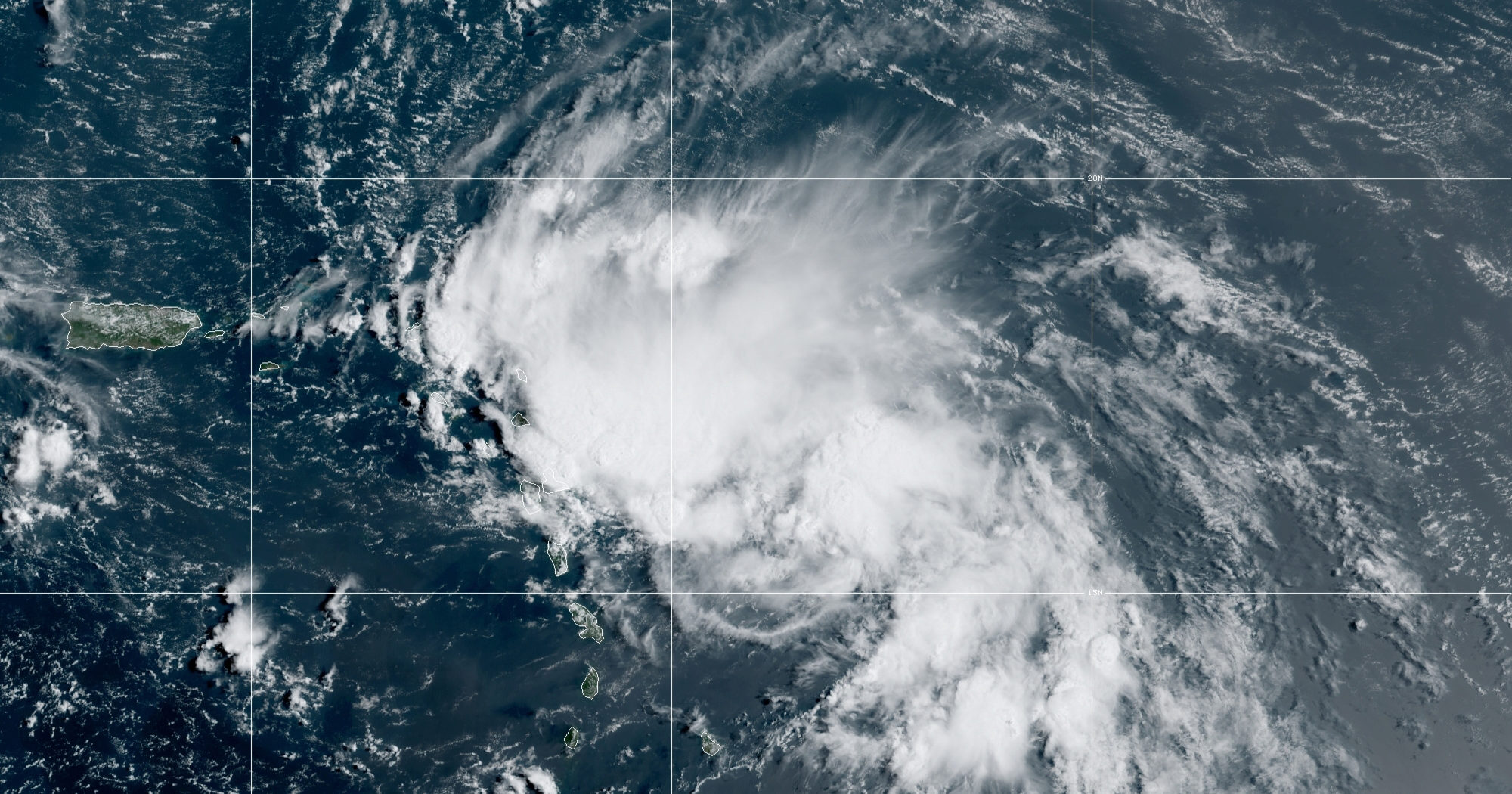
Gulf States Brace for One-Two Punch as Tropical Storms Gather Strength
Two tropical storms advanced across the Caribbean on Saturday as potentially historic threats to the U.S. Gulf Coast, one dumping rain on Puerto Rico and the Virgin Islands while the other was pushing through the gap between Mexico’s Yucatan Peninsula and Cuba.
Tropical Storms Laura and Marco were both projected to approach the U.S. Gulf Coast at or close to hurricane force.
The current, uncertain track would take them to Texas or Louisiana.
Two hurricanes have never appeared in the Gulf of Mexico at the same time, according to records going back to at least 1900, according to Colorado State University hurricane researcher Phil Klotzbach.
The last time two tropical storms were in the Gulf together was in 1959, he said.
The last time two storms made landfall in the United States within 24 hours of each other was in 1933, Klotzbach said.
The projected track from the U.S. National Hurricane Center would put both storms together in the Gulf on Tuesday, with Marco hitting Texas and Laura making landfall a little less than a day later, though both tracks remain uncertain.
Laura was already hitting Puerto Rico and the Virgin Islands on Saturday morning and was expected to drench the Dominican Republic, Haiti and parts of Cuba during the day on its westward course.
Puerto Rico Gov. Wanda Vázquez declared a state of emergency and warned that flooding could be worse than what Tropical Storm Isaias unleashed three weeks ago because the ground is now saturated.
“No one should be out on the streets,” she said.
The storm was centered about 20 miles south of San Juan, with maximum sustained winds of 40 mph. It was moving west at 18 mph.
Officials said they were most concerned about the thousands of people who have been living under tarps since 2017’s Hurricane Maria and the hundreds of families living along Puerto Rico’s southern coast in homes damaged by a string of strong earthquakes this year.
Marco, meanwhile, was strengthening while centered about 105 miles east of Cozumel island, headed to the north-northwest at 12 mph. It had maximum sustained winds of 65 mph. It was expected to become a hurricane later in the day.
The Hurricane Center said it expects the storms to stay far enough apart to prevent direct interaction as the region braces for the peak of the Atlantic hurricane season, which is forecast to be unusually active.
Both storms were expected to bring 3 to 6 inches of rain, threatening widespread flooding across a vast region.
Forecasters said that while atmospheric conditions are favorable for Laura to grow, its passage over Puerto Rico and the mountains of Haiti, the Dominican Republic and Cuba could tear it apart or weaken it before it enters warm Gulf waters conducive to growth.
Officials in the Florida Keys, which Laura might pass over on its route into the Gulf, declared a local state of emergency on Friday and issued a mandatory evacuation order for anyone living on boats, in mobile homes and in campers.
Citing both storm systems, Louisiana Gov. John Bel Edwards declared a state of emergency on Friday night.
“It is too soon to know exactly where, when or how these dual storms will affect Louisiana, but now is the time for our people to prepare for these storms,” Edwards said in a statement.
Laura had earlier forced the closure of schools and government offices in the eastern Caribbean islands of Anguilla and Antigua, according to the Caribbean Disaster Emergency Management Agency.
The Western Journal has reviewed this Associated Press story and may have altered it prior to publication to ensure that it meets our editorial standards.
Truth and Accuracy
We are committed to truth and accuracy in all of our journalism. Read our editorial standards.
Advertise with The Western Journal and reach millions of highly engaged readers, while supporting our work. Advertise Today.












